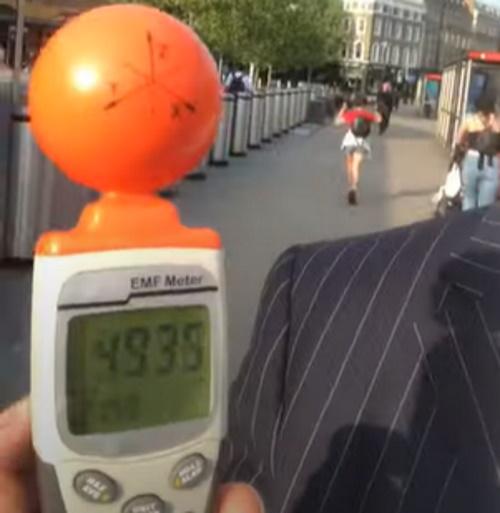Concerns about the health affects of wireless technologies are about to take a major leap with the introduction of the newest upgrade called 5G. Installation of more antennas are scheduled across the world and a dramatic increase in power transmissiom without any studies being conducted for health affects. The dazzling new world awaits!
http://www.saferemr.com/
The Looming Health Risks of 5G Technology http://www.cellphonecancer.com/the-looming-health-risks-of-5g-technology/
1/06/2017 https://www.wirelessweek.com/news/2017/01/mobile-now-act-resurfaces-day-1-115th-congress
The Mobile Now Act, a bill that aims to free up more federal and non-federal spectrum for 5G and next generation wireless services, resurfaced before the Senate Commerce Committee on Tuesday, which was the first day the 115th Congress met.
How will the 5G network change the world? 1 December 2014 http://www.bbc.com/news/technology-30224853
Captions for pictures below:
1. Small masts could be used where buildings might block higher frequencies, creepy.
2.Japan wants to play host, not just to the 2020 Olympics, but also to the world's first commercial 5G network
http://www.saferemr.com/
The Looming Health Risks of 5G Technology http://www.cellphonecancer.com/the-looming-health-risks-of-5g-technology/
In early March, the passage of the Mobile Now Act suggests that the United States government, including both the Senate and Federal Communications Commission, plans to expand 5G mobile broadband throughout the country. While many parties are focused on the potential advantages that 5G speed will provide for technology and communications, there are many experts who already beginning to predict that the implementation of 5G technology throughout the country will pose greater health risks than wireless technology already does.
New York University Study
In 2015, analysts at New York University argued in a report for revised safety metrics based on body temperature opposed to standard power density. 5G networks, however, will be built around standard power density, which threatens both individual health and the environment. Because future devices using 5G will operate on a spectrum with different qualities than today’s wireless broadband, researchers behind the study also express the dire need for the Federal Communications Commission to review and adjust its policies accordingly. One of the rules that researchers articulated must be updated is that the current Federal Communications Commission standards do not specify limits above 100 GHz, which wireless networks will inevitably use as technology continues to improve.
Massey University Study
New York University is not the only center arguing for changes in current safety standards regarding the potential threat of 5G. Massey University in New Zealand is in the process of conducting an investigation, “Analyzing Harmful Electromagnetic Exposure Due to Future Millimeter Wave Transmissions,” to reveal exactly what negative impact 5G will have on human health. The principal investigator behind the program has expressed the potential impact that the study could have including required structural changes if 5G is proven to have adverse health consequences. The likely danger by 5G is that network changes will require an increase in the number of wireless transmitters used. Early announcements of the study also suggest that 5G might bring our country dangerously close to exceeding the defined limits for power density, which could very well threaten the health of individuals to a degree not yet seen. Cell Phone Cancer could continue to become. .
1/06/2017 https://www.wirelessweek.com/news/2017/01/mobile-now-act-resurfaces-day-1-115th-congress
The Mobile Now Act, a bill that aims to free up more federal and non-federal spectrum for 5G and next generation wireless services, resurfaced before the Senate Commerce Committee on Tuesday, which was the first day the 115th Congress met.
First circulated as a draft in November 2015 and introduced in February 2016, the Mobile Now Act was unanimously approved by the Senate Commerce Committee in March but never made it to a full vote in the Senate and House of Representatives during the 114th Congress.
Among other things, the Mobile Now Act would cement in law President Obama’s goal of making 500 MHz of spectrum – including 255 MHz of federal and non-federal airwaves below 6 GHz and 100 MHz of unlicensed spectrum – available for mobile and fixed wireless broadband use by the end of 2020. The bill would also require the FCC to publish a notice of proposed rule making to consider service rules to authorize mobile or fixed terrestrial wireless operations in the airwaves from 24.25-24.450 GHz, 25.05-25.25 GHz, 31.8-33.4 GHz, 42-42.5 GHz, 71-76 GHz, and 81-86 GHz.
How will the 5G network change the world? 1 December 2014 http://www.bbc.com/news/technology-30224853
By 2020 it is thought that 50 billion to 100 billion devices will be connected to the internet. So, connections that run on different frequency bands will be established to cope with demand.
Raising the capacity of a network is a little like widening a road tunnel.
If you add more lanes more cars can go through. And ordering makes it more efficient: some lanes for long-distance, others lanes for local traffic.
The huge rise in connected devices will be due to a boom in inanimate objects using the 5G network - known as the internet of things.
It won't be just products like remotely controlling your heating or that mythical fridge ordering you more milk, trains could tell you which seats are free while they are in the station.
Companies including China's Huawei are already talking about using 5G to let driverless cars communicate with each other and the infrastructure they pass.
Tech such as smart transport and remote surgery, where a human remotely operates a robot to carry out complicated operations, will rely on lower latencies too.
Latency refers to the time lag between an action and a response.
Ericsson predict that 5G's latency will be around one millisecond - unperceivable to a human and about 50 times faster than 4G.
Captions for pictures below:
1. Small masts could be used where buildings might block higher frequencies, creepy.
2.Japan wants to play host, not just to the 2020 Olympics, but also to the world's first commercial 5G network






